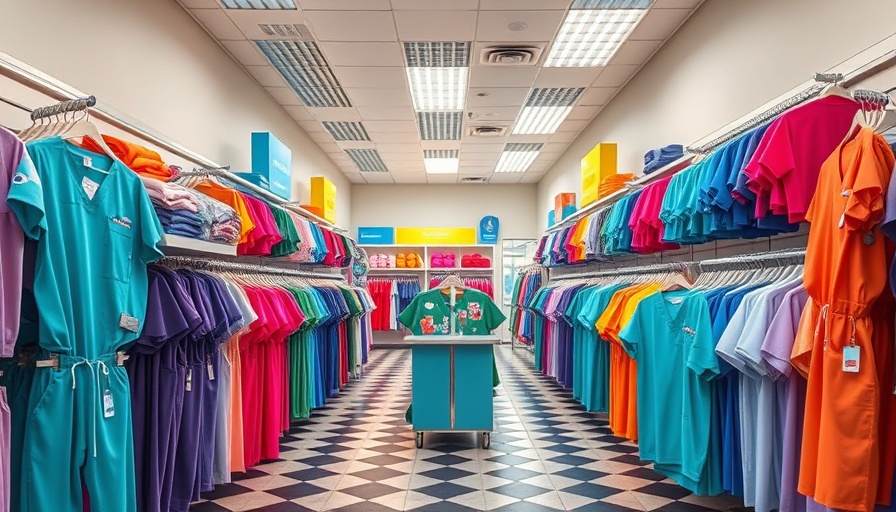
The Case for Manufacturing: A Local Perspective on Tariffs
In a time when much of what we wear originates from overseas, Heidi Kalmar, a business owner from Saginaw Township, Michigan, is advocating for a revival of domestic manufacturing through the support of the Trump administration's tariffs. Kalmar runs Rockstar and Sport-Tee Screen Printing & Embroidery, and she believes the current tariff situation offers a promising opportunity for American businesses to thrive once more.
Tariffs that Spark Debate
The recent changes in trade tariffs, notably the increase in rates on Chinese goods to a staggering 125% and some reprieve to other countries reducing rates to a universal 10%, have stirred mixed reactions across various industries. While some businesses are concerned about potential price hikes stemming from these tariffs, others, like Kalmar, view them as a path to restore American manufacturing.
Kalmar states, "I think it would be great to start manufacturing clothing in the USA again. I would love to be a part of making America great again." Her sentiment reflects a broader trend where many Americans yearn for a return to locally made products, which brings a sense of national pride and economic stability.
Understanding the Impact of Tariffs on Prices
Kalmar explains that while suppliers currently predict a 10% increase in clothing prices due to tariffs, the effects won't be immediate. Many suppliers already have sufficient stock to last for up to a year, indicating that the full financial impact on consumers may be delayed. This extended timeline presents a unique scenario for American manufacturers, allowing them to adjust to these new tariff regulations before everyone feels the pinch.
Reviving American Made: A Solution to Unfair Trade?
For over two decades, trade dynamics have seemingly posed challenges for American manufacturers. Kalmar argues that many of America's unique clothing patterns and designs are being produced overseas. "The patterns are American. The patterns are our clothing. They’re our patterns. They’re our companies. So, why can’t they just make them here?" she implores. Her advocacy for tariffs is rooted in an aspiration to shift these patterns back to American soil.
With tariffs creating a financial incentive for companies to source their products locally, this could help restore the balance in a market that she believes has been skewed in favor of international manufacturing. For local entrepreneurs seeking to compete on quality and innovation, this perspective creates a renewed call to action.
Parallel Examples: Other Industries in the Mix
This isn't only a clothing issue. Various industries are feeling the ripple effects of tariff adjustments. Similar cases can be drawn from the automotive sector, where increased tariffs on imported metals led to concerns over vehicle pricing. The ripple effect of these tariffs demonstrates the interconnectedness of local businesses and the global marketplace, revealing that one industry's challenges can have cascading consequences for others.
Future Predictions: What Lies Ahead for American Manufacturing?
The path forward for American manufacturing is uncertain yet filled with potential. If more business owners like Kalmar voice similar sentiments, we might witness a revolution in how everyday products are created, designed, and sold. Tariffs could pave the way for a renaissance in American craftsmanship, echoing a return to products made with an American touch.
This movement could lead to more sophistication in local business models, encouraging innovation and adaptation in product development rooted in domestic manufacturing. The hope of making it again in America could soon transform from a slogan into a verifiable reality.
A Local Call to Action
For consumers, shopkeepers, and entrepreneurs alike, the discussion around tariffs is more than just economic policy; it is a carefully woven narrative about identity, pride, and resilience. Supporting local businesses and advocating for American-made products could create jobs, boost the economy, and ultimately reshape consumer expectations about quality and sustainability.
In conclusion, as Kalmar noted, “Let’s make a USA shirt, let’s make USA purses, let’s make USA products again.” The ultimate action lies in the hands of consumers—by choosing local, you are not just purchasing a product; you are investing in the future of American craftsmanship and communities.
 Add Row
Add Row  Add
Add 




 Add Row
Add Row  Add
Add 

Write A Comment